Gulf banks navigate turbulent times
25 July 2025

 Much can change in a year, as GCC banks are finding out. They face a sharply different environment in mid-2025 than they did at the same point last year. In 2024, GCC banks’ immediate challenge was the downward shift in interest rates dictated by the US Federal Reserve, prompting a drop in interest income and forcing lenders to secure other forms of revenue.
Much can change in a year, as GCC banks are finding out. They face a sharply different environment in mid-2025 than they did at the same point last year. In 2024, GCC banks’ immediate challenge was the downward shift in interest rates dictated by the US Federal Reserve, prompting a drop in interest income and forcing lenders to secure other forms of revenue.
This year, the political and economic disruption wrought across much of the world has changed the calculus for regional lenders.
While lower interest income remains an ongoing challenge, a broader mix of issues requires attention, including tighter liquidity, higher cost of funds and the need to continue supporting domestic diversification agendas.
The good news for GCC banks is that, on the whole, the positives are outweighing the negatives.
According to Kamco Invest research, GCC banking sector bottom-line growth was steady in early 2025, with Q1 2025 witnessing expansion of 8.6% to reach $15.6bn, a record for that quarter.
This increase came despite a decline in net interest income of 1.7% in year-on year terms, and was mainly led by higher non-interest income, lower operating expenses and a decline in impaired loans.
Position of strength
Strongly performing Gulf economies over successive years have created favourable conditions for banks, offsetting the impact of lower interest rates.
“Throughout this period of higher oil prices, GCC banks were building their capital buffers because profitability was good,” says Redmond Ramsdale, head of Middle East bank ratings at Fitch Ratings.
“Asset quality in most of these countries has been improving. So the banks are in quite a good position with the buffers they have built.”
Strongly performing Gulf economies over successive years have created favourable conditions for banks, offsetting the impact of lower interest rates
Despite the economic volatility seen in the first half of 2025, Gulf banks have proved resilient, even if President Donald Trump’s tariffs remain a challenge for US trading partners globally, including those in the Gulf.
“Tariffs are likely to have limited direct impact on GCC banks. It’s more about what is the importance of tariffs on oil prices. Lower oil prices are negative for the GCC because oil is still the main component of government revenues – and that’s what effectively translates into lending or financing growth for the banks,” says Ramsdale.
Credit growth is holding up strongly, which in part reflects the resilience of economic diversification programmes in the GCC.
Demand for credit is also holding up, as is government spending – typically a key determinant of economic confidence, and a driver for non-oil GDP.
The consensus among analysts is that credit growth will remain in the high single-digits for the GCC as a whole, and will be still higher in Saudi Arabia.
“In Saudi Arabia we forecast that the loan growth will remain strong this year, and will be driven more by corporate lending as projects around Vision 2030 are being implemented — less so by mortgages,” says Mohamed Damak, senior director, financial services at S&P Global.
According to Damak, mortgages will continue to grow because there is still demand. “But the big story for Saudi banks is the recourse to external funding,” he says.
“They have been issuing debt on the international capital markets in order to mobilise liquidity to be able to continue to finance their growth, because deposit growth is not sufficient to finance all lending growth.”
 This is the backdrop to the extensive issuance being seen in the kingdom and other Gulf markets. Saudi National Bank (SNB) completed the issuance of $1.25bn in Tier 2 US dollar capital notes in June, with order books exceeding $4bn.
This is the backdrop to the extensive issuance being seen in the kingdom and other Gulf markets. Saudi National Bank (SNB) completed the issuance of $1.25bn in Tier 2 US dollar capital notes in June, with order books exceeding $4bn.
It is not just Saudi banks that are in issuance mode. GCC banks have about $2.2bn in US dollar-denominated Additional Tier 1 (AT1) instruments with first call dates due in 2025, and a further $3.1bn in 2026, according to Fitch Ratings. This comes off a strong year for Gulf bank debt issuance in 2024, when $42bn of issuance was seen – the previous record was in 2020 with about $26bn.
First-half 2025 issuance stands at $38bn, suggesting this year is going to set a new record. Maturities valued at $16bn are due in 2026, with $13bn due in 2027, a further driver for banks to tap the debt capital market.
At least three Saudi lenders have issued AT1 dollar-denominated capital Islamic bonds (sukuk) this year as they have moved to take advantage of tighter spreads and strong investor demand.
Saudi banks – in line with previous years – are driving loan growth, with UAE lenders not far behind.
“Our forecast for credit growth in Saudi Arabia for this year is between 10% and 12%, which is still very strong growth, and the highest in the region. That is driving quite strong profitability, despite the fact that they are funding this growth with more expensive funding,” says Ramsdale.
The kingdom’s current and savings account deposits are not growing at anywhere near the pace that loans or financing is growing, notes Fitch, so banks are filling that with term deposits or external liabilities.
The higher reliance on foreign funding has led to tighter liquidity. “Loan growth is exceeding deposit growth, so banks need to issue,” says Ramsdale.
Another reason for issuance is the need for dollars, which are being used to fund major government projects, notably in Saudi Arabia, where about 40% of the GCC bank issuance is located.
Shrinking liquidity
The prospect of tightening liquidity, as deposits prove trickier to attract, is not a cause for undue concern. There are ample tools at the central bank’s disposal to manage the situation.
“The Saudi Arabian Monetary Agency still has a lot of [deposits from government-related entities] sitting in its accounts that can be deployed into the banking sector. If liquidity gets too tight, it can do so,” says Ramsdale.
Stress-testing exercises appear to bear this out. According to S&P Global, all GCC banking systems have enough liquidity to sustain funding outflows, with the exception of Qatar, where there is a shortfall of $9bn under its hypothetical stress scenario. This is due to the fact that Qatar starts with a higher external debt compared to all other regional countries.
This $9bn is something the authorities can easily absorb, however, as demonstrated by the strong track record of support.
S&P stress tested the banking systems on three metrics – the outflow of external debt, the potential outflows of local private sector deposits and the implication on the economy and on the asset quality indicators.
The ratings agency looked at the top 45 regional banks. Under the first scenario, the outflow of external debt, 16 of the banks would show losses of around $5bn in cumulative terms, says Damak.
For the second scenario, 26 out of the top 45 would be loss-making for a total amount of around $30bn.
“But now, when you compare the $30bn to how much profit these banks have made over the last year – about $60bn – it means that they have the capacity to absorb the problem without any significant impact on capitalisation,” says Damak.
UAE banks’ massive debt external asset position makes them fairly resilient to potential stress-related external capital outflows, notes Damak.

Big banks dominate
At the individual level, the region’s large ‘national champion’ banks continue to dominate banking systems. Some of these institutions have posted impressive early-year performances.
For example, Al-Rajhi Bank, the largest lender in the GCC by market capitalisation, reported a 34% year-on-year increase in net profit in Q1 2025. It is reaping the benefit of the kingdom’s surging credit demand. Booking healthy profits on the back of strong loan demand, from both corporate and consumer sectors, comes relatively easily in this context.
However, where loan growth is weaker, banks’ earning performances have been commensurately negatively affected.
Looking ahead, profitability is expected to be marginally down this year
For Qatar National Bank, which is considered the largest Qatari bank by assets, while Q1 net profit reached $1.2bn, this
was only up by a couple of percentage points compared to the same period last year, indicative of less robust credit growth in Qatar.
“The largest banks in the GCC – the likes of SNB and Al-Rajhi in Saudi Arabia, First Abu Dhabi Bank and Emirates NBD in the UAE and National Bank of Kuwait and Kuwait Finance House in Kuwait – tend to have around 50%-60% of the total banking system, which gives them an advantage in terms of efficiency, delivery and market access,” says Ashraf Madani, a senior analyst at Moody’s Financial Institutions Group.
“These banks are highly rated in terms of their standalone and overall deposit ratings and we expect their advantage to continue.”
 Looking ahead, profitability is expected to be marginally down this year, says Madani, reflecting some pressure on the net interest margins because of the lower rates since Q4 last year, and also the expectation that credit costs should normalise compared to the previous year.
Looking ahead, profitability is expected to be marginally down this year, says Madani, reflecting some pressure on the net interest margins because of the lower rates since Q4 last year, and also the expectation that credit costs should normalise compared to the previous year.
One of the big plus-points for Gulf banks is the improvement in asset quality witnessed in the past year, suggesting that Gulf economies’ post-Covid recovery has helped reduce bad loans.
“We’re seeing non-performing loans heading in the right direction, trending lower, and that’s basically because of the strong performance of borrowers, and the denominator effect, whereby an increase in the overall size of the loans will lower overall ratio,” says Madani.
Other factors supportive of loan quality are regulatory changes in the UAE, which has allowed UAE banks to write off some of the legacy problem loans, another factor that is likely to move the headline non-performing loan ratio down.
Given the political and economic turbulence witnessed in the first half of the year, Gulf bank chiefs will not be minded to make rash predictions about future conditions. Even so, the resilience on display, and the healthy loan appetite, will likely boost confidence that lenders in the region can withstand further headwinds.
Exclusive from Meed
-
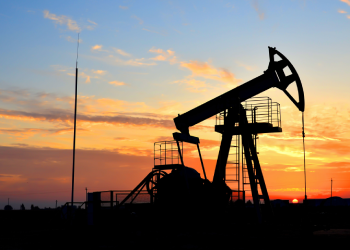 SLB passes evaluation for Kuwait upstream project
SLB passes evaluation for Kuwait upstream project12 December 2025
-
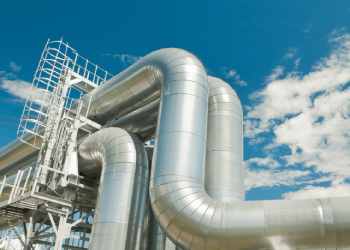 Dana Gas makes onshore discovery in Egypt
Dana Gas makes onshore discovery in Egypt12 December 2025
-
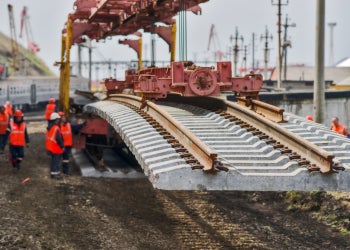 SAR to tender new phosphate rail track section in January
SAR to tender new phosphate rail track section in January12 December 2025
-
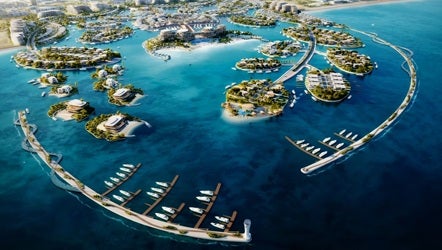 Dar Global to develop $4.2bn Oman mixed-use project
Dar Global to develop $4.2bn Oman mixed-use project10 December 2025
-
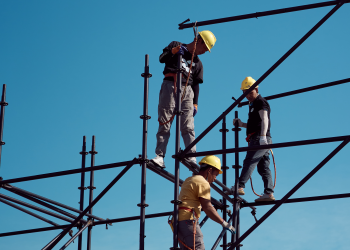 Contract award nears for Saudi Defence Ministry headquarters
Contract award nears for Saudi Defence Ministry headquarters10 December 2025
All of this is only 1% of what MEED.com has to offer
Subscribe now and unlock all the 153,671 articles on MEED.com
- All the latest news, data, and market intelligence across MENA at your fingerprints
- First-hand updates and inside information on projects, clients and competitors that matter to you
- 20 years' archive of information, data, and news for you to access at your convenience
- Strategize to succeed and minimise risks with timely analysis of current and future market trends
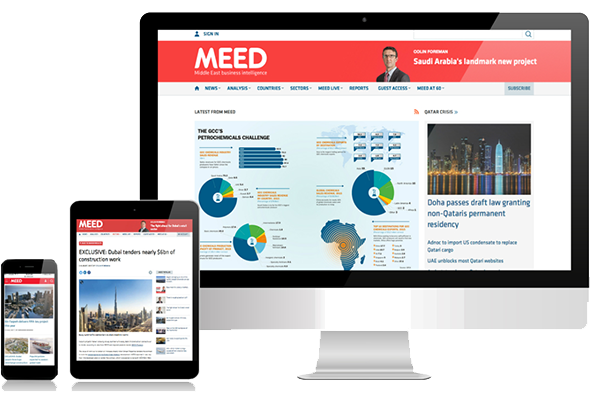
Related Articles
-
 SLB passes evaluation for Kuwait upstream project
SLB passes evaluation for Kuwait upstream project12 December 2025
The US-based oilfield services company SLB, formerly Schlumberger, has passed the technical bid evaluation for a major project to develop Kuwait’s Mutriba oil field.
The Houston-headquartered company was the only bidder to pass the technical evaluation for the Mutriba integrated project management (IPM) contract.
The minimum passing technical evaluation score was 75%.
The full list of bidders was:
- SLB (US): 97%
- Halliburton (US): 72%
- Weatherford (US): 61.5%
The decision was finalised at a meeting of the Higher Purchase Committee (HPC) of state-owned Kuwait Petroleum Corporation (KPC) on 20 November 2025.
According to a document published earlier this year by KOC, the IPM tender for the Mutriba field aims to “accelerate production through a comprehensive study that includes economic feasibility evaluation, well planning and long-term sustainability strategies”.
The field was originally discovered in 2009.
Commercial production from the Mutriba field started earlier this year, on 15 June, after several wells were connected to production facilities.
The field is located in a relatively undeveloped area in northwest Kuwait and spans more than 230 square kilometres.
The oil at the Mutriba field has unusually high hydrogen sulfide content, which can be as much as 40%.
This presents operational challenges requiring specialised technologies and safety measures.
In order to start producing oil at the field, KOC deployed multiphase pumps to increase hydrocarbon pressure and enable transportation to the nearest Jurassic production facilities in north Kuwait.
The company also built long-distance pipelines stretching 50 to 70 kilometres, using high-grade corrosion-resistant materials engineered to withstand the high hydrogen sulfide levels and ensure long-term reliability.
KOC also commissioned the Mutriba long-term testing facility in northwest Kuwait, with a nameplate capacity of around 5,000 barrels of oil a day (b/d) and 5 million standard cubic feet of gas a day (mmscf/d).
Once this facility was commissioned, production stabilised at 5,000 b/d and 7 mmscf/d.
In documents published earlier this year, KOC said that starting production from the field had “laid a solid foundation” for the IPM contract by generating essential reservoir and surface data that will guide future development.
Future output from the field is expected to range between 80,000 and 120,000 b/d, in addition to approximately 150 mmscf/d of gas.
https://image.digitalinsightresearch.in/uploads/NewsArticle/15235579/main.png -
 Dana Gas makes onshore discovery in Egypt
Dana Gas makes onshore discovery in Egypt12 December 2025
Register for MEED’s 14-day trial access
UAE-based Dana Gas has made an onshore gas discovery in Egypt’s Nile Delta area, according to a statement from the company.
The discovery was made by the drilling of the North El-Basant 1 exploratory well, and initial well results indicate estimated reserves of 15-25 billion cubic feet of gas.
Production from the reserve is expected to exceed 8 million cubic feet a day (cf/d) once the well is connected to the national network.
The North El-Basant 1 exploratory well was the fourth well in a campaign of 11 development and exploration wells.
The campaign is being executed as part of the company’s $100m investment programme to support domestic gas production, increase reserves and meet growing energy demand.
Earlier this year, Dana Gas completed the drilling of three wells, adding 10 million cf/d.
The programme is expected to increase long-term production and add approximately 80 billion cubic feet of recoverable gas reserves, according to Dana Gas.
Dana Gas expects to start drilling the fifth well in the programme, the Daffodil exploration well, in the first week of January 2026.
Richard Hall, the chief executive of Dana Gas, said: “The latest drilling success reinforces the value of our investment programme in Egypt and highlights the significant remaining potential within the Nile Delta.”
He added: “By increasing local gas production, the programme will help reduce Egypt’s reliance on imported liquefied natural gas (LNG) and fuel oil and is expected to generate more than $1bn in savings for the national economy over time.”
Previously, Dana Gas signed an agreement with state-owned Egyptian Natural Gas Holding Company (EGas) to secure additional acreage under improved fiscal terms, and to accelerate drilling activity.
Hall said: “We appreciate the strong cooperation from EGas and the ministry, and we remain committed to delivering the majority of our planned programme next year.
“Regular and timely payments from our partners are crucial to sustaining our investment programme in Egypt."
In November, a new gas discovery was made in Egypt’s Western Desert region by Khalda Petroleum Company, a joint venture of state-owned Egyptian General Petroleum Corporation and US-headquartered Apache Corporation.
Egypt also started gas production from the West Burullus field in the Mediterranean Sea, after connecting the first wells to the national gas grid.
The country is currently pushing to increase gas production in order to meet domestic demand and reduce its import bill.
https://image.digitalinsightresearch.in/uploads/NewsArticle/15235552/main.png -
 SAR to tender new phosphate rail track section in January
SAR to tender new phosphate rail track section in January12 December 2025

Register for MEED’s 14-day trial access
Saudi Arabian Railways (SAR) is expected to float another multibillion-riyal tender to double the tracks on the existing phosphate railway network connecting the Waad Al-Shamal mines to Ras Al-Khair in the Eastern Province.
MEED understands that the new tender – covering the second section of the track-doubling works, spanning more than 150 kilometres (km) – will be issued in January.
The new tender follows SAR’s issuance of the tender for the project's first phase in November, which spans about 100km from the AZ1/Nariyah Yard to Ras Al-Khair.
The scope includes track doubling, alignment modifications, new utility bridges, culvert widening and hydrological structures, as well as the conversion of the AZ1 siding into a mainline track.
The scope also covers support for signalling and telecommunications systems.
The tender notice was issued in late November, with a bid submission deadline of 20 January 2026.
Switzerland-based engineering firm ARX is the project consultant.
MEED understands that these two packages are the first of four that SAR is expected to tender for the phosphate railway line.
The other packages expected to be tendered shortly include the depot and the systems package.
In 2023, MEED reported that SAR was planning two projects to increase its freight capacity, including an estimated SR4.2bn ($1.1bn) project to install a second track along the North Train Freight Line and construct three new freight yards.
Formerly known as the North-South Railway, the North Train is a 1,550km-long freight line running from the phosphate and bauxite mines in the far north of the kingdom to the Al-Baithah junction. There, it diverges into a line southward to Riyadh and a second line running east to downstream fertiliser production and alumina refining facilities at Ras Al-Khair on the Gulf coast.
Adding a second track and the freight yards will significantly increase the network’s cargo-carrying capacity and facilitate increased industrial production. Project implementation is expected to take four years.
State-owned SAR is also considering increasing the localisation of railway materials and equipment, including the construction of a cement sleeper manufacturing facility.
https://image.digitalinsightresearch.in/uploads/NewsArticle/15229624/main.jpg -
 Dar Global to develop $4.2bn Oman mixed-use project
Dar Global to develop $4.2bn Oman mixed-use project10 December 2025
Register for MEED’s 14-day trial access
Saudi Arabia-headquartered real estate developer Dar Global has announced that it will develop a mixed-use project in Muscat at an estimated investment of RO1.6bn ($4.2bn).
Dar Global will co-develop the Muscat Marine, Art & Digital District project with Oman's Art District Real Estate Development Company.
The project will cover an area of over 1.5 million square metres (sq m) and will be developed in several phases over 12 years.
The development will comprise a mix of residential communities, cultural venues, marinas, retail spaces, finance and business parks and hotels.
Dar Global, a subsidiary of Dar Al-Arkan, was one of the first Saudi brands to list on the London Stock Exchange.
Dar Al-Arkan established Dar Global in 2017 to focus on developing projects in the Middle East and Europe, including in Dubai, Qatar, Oman, London and the Costa del Sol in southern Spain.
Dar Global has $12bn-worth of projects under development in six countries: the UAE, Oman, Qatar, Saudi Arabia, the UK and Spain.
It completed three developments – the Urban Oasis and Da Vinci towers in Dubai and the Sidra gated community in Bosnia – in 2023.
The company collaborates with global brands including Missoni, W Hotels, Versace, Elie Saab, Automobili Pagani and Automobili Lamborghini.
In Oman, Dar Global is also developing the Aida project. In May, it awarded a contract to develop the villas and apartments as part of the project.
According to an official statement, the construction works are expected to start immediately and the project is slated for completion in 2026.
The main contract was awarded to local firm Al-Adrak Trading & Contracting.
The latest announcement follows the awarding of contracts in June last year for the development of the first phase of the Aida project.
The Aida project is being developed as a joint venture with Omran Group and the first phase is expected to be completed in 2027.
UK analytics firm GlobalData forecasts that the Omani construction industry will expand at an annual average growth rate of 4.2% in 2025-28. Growth in the country will be supported by rising government investments in renewable energy, the transport infrastructure and the housing sector, all as part of Oman's Vision 2040 strategy.
Growth during the forecast period will also be supported by increasing hospitality sector investments, with the government planning to invest RO11.9bn ($31bn) in tourism development projects by 2040 and supporting the construction of several hospitality projects.
https://image.digitalinsightresearch.in/uploads/NewsArticle/15222694/main.jpg -
 Contract award nears for Saudi Defence Ministry headquarters
Contract award nears for Saudi Defence Ministry headquarters10 December 2025

Saudi Arabia’s Defence Ministry (MoD) is preparing to award the contract to build a new headquarters building, as part of its P-563 programme in Riyadh.
MEED understands that bid evaluation has reached advanced stages and the contract award is imminent.
The MoD issued the tender in April. The commercial bids were submitted in September, as MEED reported.
Located to the northwest of Riyadh, the P-563 programme includes the development of facilities and infrastructure to support the MoD’s broader initiatives under the kingdom’s Vision 2030 strategy.
It covers the construction of:
- A new military city featuring the MoD headquarters, support and logistics facilities, a residential and commercial community and space for future command centres
- A National Defence University with a library, conference centre and academic buildings
- A self-sustaining Joint Forces Command compound located approximately 50 kilometres from the military city
The budget for the entire programme is expected to be $10bn-$12bn.
In September 2023, MEED reported that Spain-headquartered Typsa had won two contracts for the project.
The first contract, worth $11.4m, included data management, geographic information systems management, geotechnical reporting and the preparation of the phase one final traffic report. The contract duration was 270 days from the notice to proceed.
The second contract, valued at $10.8m, involved preparing four conceptual masterplans for the P-563 site. It was set to last 255 days from the notice to proceed.
These followed a $290m consultancy contract awarded to Typsa in March of the same year. The single-award task order covered a three-year base period, with an optional two-year extension.
Typsa’s scope of work included programme management planning, communications, change and quality management and cost and schedule tracking.
It also included design requirements, codes, standards and submission requirements, programme guidance, study integration, risk analysis and management, design reviews and a programme-of-work breakdown plan.
 READ THE DECEMBER 2025 MEED BUSINESS REVIEW – click here to view PDF
READ THE DECEMBER 2025 MEED BUSINESS REVIEW – click here to view PDFProspects widen as Middle East rail projects are delivered; India’s L&T storms up MEED’s EPC contractor ranking; Manama balances growth with fiscal challenges
Distributed to senior decision-makers in the region and around the world, the December 2025 edition of MEED Business Review includes:
> AGENDA 1: Regional rail construction surges ahead> INDUSTRY REPORT 1: Larsen & Toubro climbs EPC contractor ranking> INDUSTRY REPORT 2: Chinese firms expand oil and gas presence> CONSTRUCTION: Aramco Stadium races towards completion> RENEWABLES: UAE moves ahead with $6bn solar and storage project> INTERVIEW: Engie pivots towards renewables projects> BAHRAIN MARKET FOCUS: Manama pursues reform amid strainTo see previous issues of MEED Business Review, please click herehttps://image.digitalinsightresearch.in/uploads/NewsArticle/15222401/main.gif



